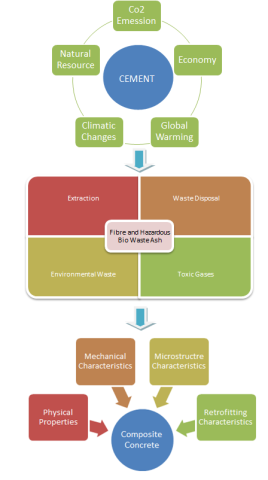You are here
Experimental investigation of hybrid composites using biowastes and Calotropis gigantea: an eco-friendly approach

The wastes are in many forms consist of organic materials like human, medical, food, plastics, construction waste etc. many researchers are focused on the waste management to gives more importance to the environment. The bio degradable waste was used in this research with naturals fibers. The need for hybrid composites has increased in a variety of industrial applications. A unique and useful substance is created when two or more distinct components join in this kind of composite. Because of its exceptional characteristics, research is being done on the integration of particles bio waste and fiber into polymers. The like a strong weight-to-strength ratio, immunity to rust and temperature changes, and several custom qualities. This research focuses on the property description of Calotropis Gigantea and Bio waste ashes in form of epoxy matrix and in concrete as retrofitting composite. Calotropis Gigantea and Bio waste ashes are in composite form. field emission scanning electron microscope (FESEM) The characterisation is used to make sure that the polymer's structural shape and particle dispersion are correct. The mechanical, dynamic mechanical, thermal wear and concrete strength qualities are assessed. When particles are added, the qualities improve. By raising the weight of particle at certain percentage to the matrix and concrete mixture is for to increase the mechanical properties like tension, elongation, impact. To analyze the tribological behaviour, wear analysis is carried out. The results revealed that, the laminates reinforced with Calotropis Gigantea and Bio waste ashes show maximum strength. This is correlated with the increased interaction between the fiber-matrix, waste ash and homogeneous dispersion particle and also having greater strength compare to conventional concrete. The FESEM micrographs for tensile fracture surface also provided structural morphology. The findings will provide a vivid understanding for the use of composites in various structural retrofitting applications.
